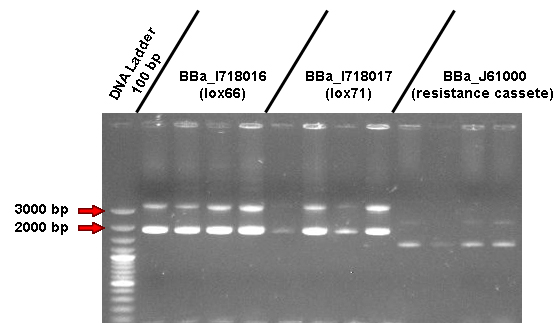Back to Calendar
YeastGuard
Dephosphorylation - CIAP test
New biobricks
Raíssa and Taís
Customizing the PCR
Gradient PCR of the Jen1 (ORF) using the melting temperatures: 53ºC, 55ºC and 57ºC. How you can see in the gel, this amplification wasn’t so good. Then the strategy will be: join the three products obtained by this gradient PCR and make a electrophoresis to purify the band corresponding to the Jen1 (ORF) size and ,then, make a new PCR.
To get a optimal PCR that can amplify the …… using the primers VF and VR we did a gradient PCR. The temperatures tested were the same of the Jen1 (ORF) PCR.
The electrophoresis didn’t show big differences into the three melting temperatures used and the bands pattern correspond to the size of ………
Wesley and Gleidson
ColiGuard
Cre-Recombinase's and pSB1A3's purification
- Now that we obtained more Cre-Recombinase sample (see September 27th), we could proceed with Cre-Recombinase without ATG's biobrick construction.
- We ran an agarose gel with Cre-Recombinase's PCR product, as well as pSB1A3's miniprep sample. We then purified the target bands with Purelink's Quick Gel Extrection Kit, according to the manufacturer's protocol (Protocol 7).
Víctor
CeiB: Colony PCR
Apparently, this time we got transformed cells. We performed colony PCR with VF and VR primers in order to comprove the transformation. The CeaB transformation was wrong, because it didn’t show the right size band. We tried one more time the transformation. Otherwise, the CeiB transformation showed a possibly correct band size (~400). To confirm it, tomorrow we are going to make miniprep and PCR again.
Luige
Miniprep Results

Marcelo
|






|
|
|